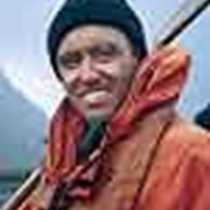King George Island, At Sea
After a rather boisterous crossing of the Drake Passage we made our first landfall at Yankee Harbor, on the south shore of Greenwich Island. Although we seem to be at the very edge of the earth, we are not the first here. On the beach lies a try-pot, a giant kettle used for rendering elephant seal blubber into oil. This artifact of a bygone industry dates back to the 1820’s, as does the name, Yankee Harbor. Antarctica appears to be the most pristine place on the planet, yet for a brief period these shores were frequented by gangs of men intent on murder and mayhem.
The South Shetlands were first sighted in 1819 – this was the first land ever found in the Antarctic. Within months word had spread through the waterfront bars of South America. The new southern land was teeming with fur seals. These animals had already been decimated at South Georgia, the Falkland Islands, and around southern South America. Discovery of new sealing grounds provoked a stampede, a gold-rush. In late 1819 at least 10 ships visited the South Shetlands; the following season saw upwards of 90 vessels hunting Fur seals for their valuable pelts. Most of the sealers were from the fledgling Untied States, the remainder British. This sheltered natural harbor where we made our first landing was occupied by six American ships from Stonington, Ct. during the 1820-21 season, thus the name Yankee Harbor. The sealers operated in almost total secrecy, not sharing any discoveries with their competitors; yet a few records survive. Incredibly, a single one of the six ships in the Stonington fleet took 25,000 Fur seal skins in just a few weeks. A 20 year-old Nathaniel Palmer, in command of the tiny Hero, was one of the very first people to sight the Antarctic mainland. Sailing without charts, radar, engines, and dressed only in canvas and wool, these hardy men opened the door on this continent as they pursued and slaughtered their prey. Unfortunately they were efficient professionals, and by 1823 Fur seals had all but disappeared from these shores. We are indeed fortunate to have met a few of them today – a hopeful indication that this remotest of all wild places is capable of healing its wounds.
After a rather boisterous crossing of the Drake Passage we made our first landfall at Yankee Harbor, on the south shore of Greenwich Island. Although we seem to be at the very edge of the earth, we are not the first here. On the beach lies a try-pot, a giant kettle used for rendering elephant seal blubber into oil. This artifact of a bygone industry dates back to the 1820’s, as does the name, Yankee Harbor. Antarctica appears to be the most pristine place on the planet, yet for a brief period these shores were frequented by gangs of men intent on murder and mayhem.
The South Shetlands were first sighted in 1819 – this was the first land ever found in the Antarctic. Within months word had spread through the waterfront bars of South America. The new southern land was teeming with fur seals. These animals had already been decimated at South Georgia, the Falkland Islands, and around southern South America. Discovery of new sealing grounds provoked a stampede, a gold-rush. In late 1819 at least 10 ships visited the South Shetlands; the following season saw upwards of 90 vessels hunting Fur seals for their valuable pelts. Most of the sealers were from the fledgling Untied States, the remainder British. This sheltered natural harbor where we made our first landing was occupied by six American ships from Stonington, Ct. during the 1820-21 season, thus the name Yankee Harbor. The sealers operated in almost total secrecy, not sharing any discoveries with their competitors; yet a few records survive. Incredibly, a single one of the six ships in the Stonington fleet took 25,000 Fur seal skins in just a few weeks. A 20 year-old Nathaniel Palmer, in command of the tiny Hero, was one of the very first people to sight the Antarctic mainland. Sailing without charts, radar, engines, and dressed only in canvas and wool, these hardy men opened the door on this continent as they pursued and slaughtered their prey. Unfortunately they were efficient professionals, and by 1823 Fur seals had all but disappeared from these shores. We are indeed fortunate to have met a few of them today – a hopeful indication that this remotest of all wild places is capable of healing its wounds.




